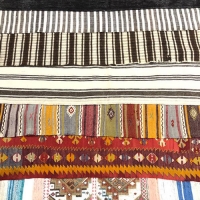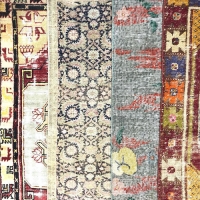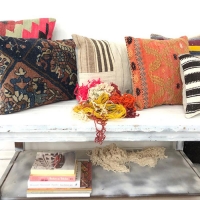
Traces of the steppe in the rug
In our world, many cultures, languages, religions and civilizations continue to be symbolic narratives in places where there are uninterrupted experiences as material cultural products. The weavings, which cover a part of folk art, have provided a rich accumulation of symbolic expressions with color, form, meaning and compositions.
The art of weaving, which has a long tradition in the world, has a close connection with established cultures. From the 10th century on, weaving has gained a new impetus in many respects. The weavings which developed in steppe and steppe climates in history had an important place in the life of the nomads. When the settlers came to life, they carried out the process of processing rugs within the context of the art of weaving in order to meet their own needs and provide their livelihood. These handicraft products were then used in some places for aesthetic purposes.
Nowadays, a small number of nomads still perform the rug as an art. It can be said that; The rugs continue to show the traces of culture, art, belief and lifestyle centuries ago through motifs.
Rug has a long tradition in Anatolia since history. In general, the rugs in the weaving art have been used as the products of the hand-made products of the steppe settlers who migrated from Central Asia to Anatolia from the 10th century on the other. At the moment these products are really worth a work of art.
Rugs gaining new momentum with the settling of settlers, are one of the most developed weaves in steppe and steppe climate conditions. In history, rugs and carpets have played an important role in the life of the nomads and played an important role in transferring the cultural heritage to the future.
Today's traditional art rugs have traces of centuries ago. Rugs showing a structure that synthesizes the traces of culture, art, belief and life style through motifs have an important usage area in terms of nostalgia.
In old settlements, rug weaving has a remarkable structure in terms of rich symbolic expressions. When these icons and symbols are examined, it is seen that they present together a lot of meaning integrity.
The symbolic motifs in the traditional rugs have attracted the attention of the world by reaching out a universal language by means of their meaning, abstract and geometrical forms, simple and natural colors and local culture.



